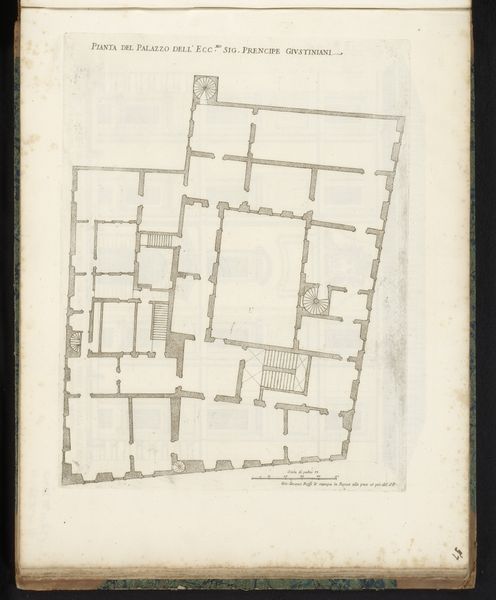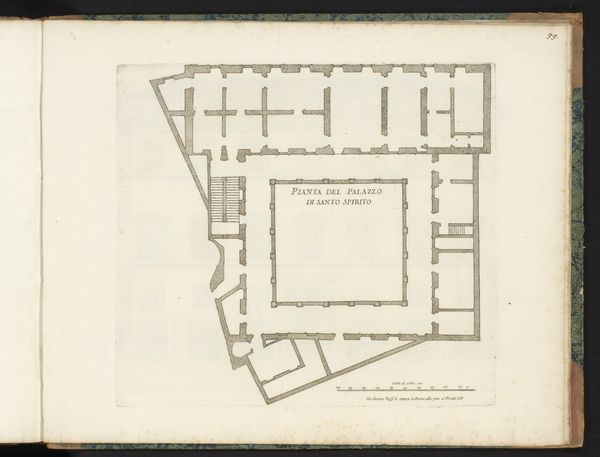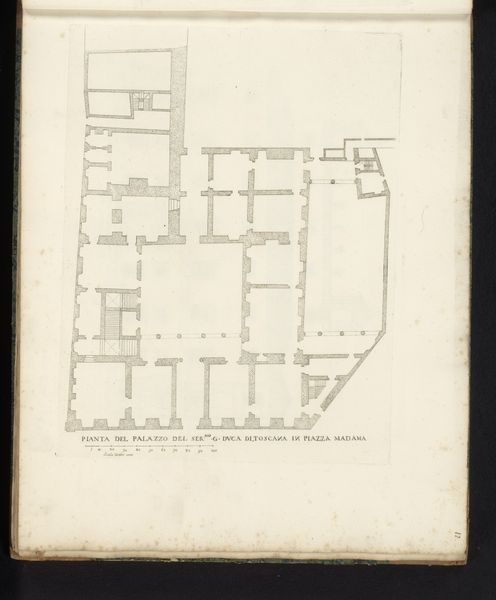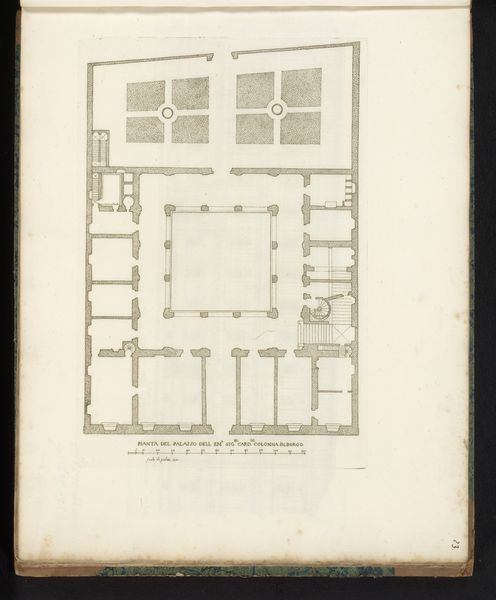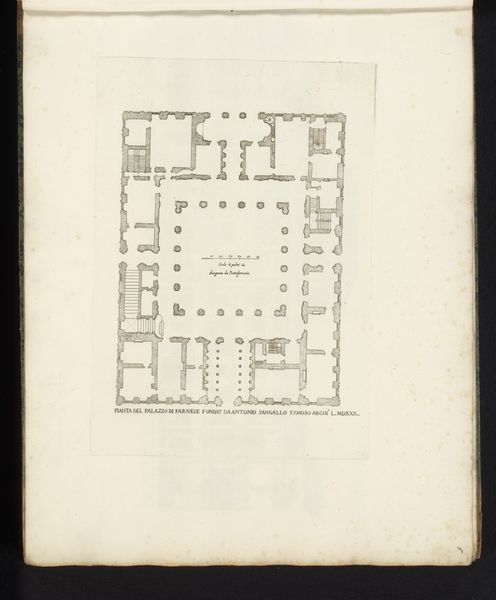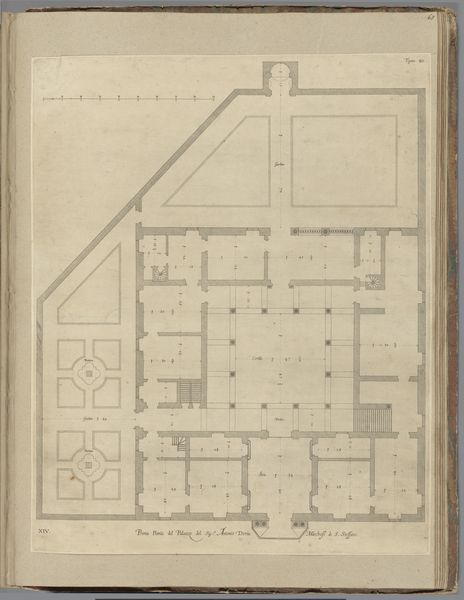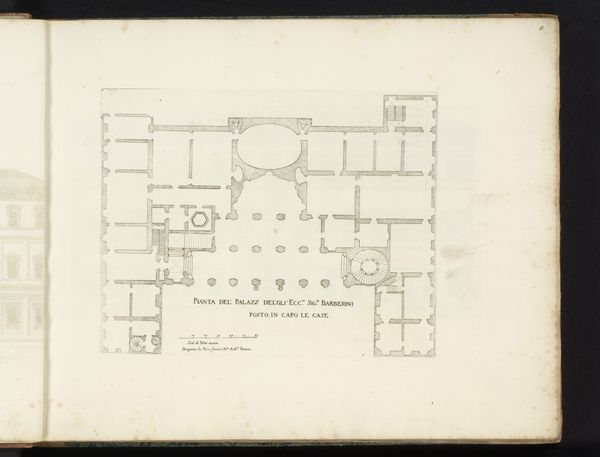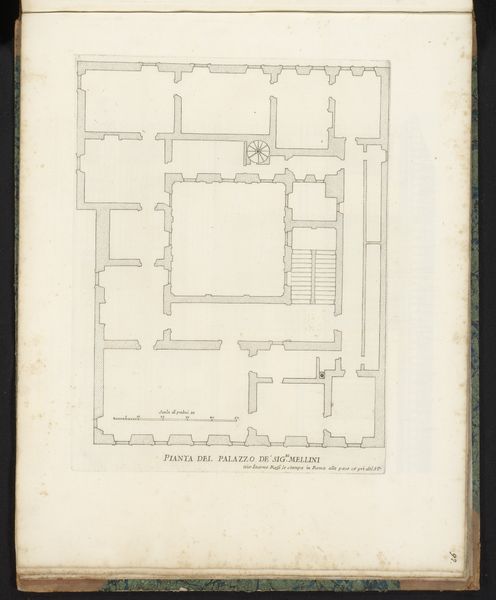
drawing, print, engraving, architecture
#
drawing
#
aged paper
#
toned paper
#
hand written
#
homemade paper
#
baroque
#
ink paper printed
# print
#
sketch book
#
hand drawn type
#
tea stained
#
personal sketchbook
#
geometric
#
pen work
#
cityscape
#
engraving
#
architecture
Dimensions: height 399 mm, width 265 mm
Copyright: Rijks Museum: Open Domain
Curator: Ah, yes, "Plattegrond van Palazzo Spada," created after 1655 by Giovanni Battista Falda. This engraving and print, now residing in the Rijksmuseum, offers us a glimpse into the architectural layout of a Roman palace from the Baroque era. Editor: It's got a slightly faded look – almost like peering at a ghost of grand design. There's a stark simplicity to it, a blueprint that’s been pulled from some architect's dusty, leather-bound sketch book. Curator: Exactly. This piece really illuminates the Baroque fascination with geometric precision and order, yet simultaneously hints at the complexities of space and social hierarchy embedded within such structures. Notice the central courtyard – a vital social nexus - around which the more private rooms are arranged. Editor: It’s kind of austere, isn't it? Less of the Baroque flamboyance I associate with the era, and more like the skeletal structure beneath all the cherubs and gilded carvings. There are clear patterns - squares repeating as some sort of monumental echo. I can almost feel the endless walking the inhabitants might have to face on a daily basis. I get exhausted by just imagining all those rooms. Curator: The repetition of those squares speaks to something beyond just layout. Think of them as modules – symbolic units representing not just physical space but perhaps also social standing and the compartmentalization of life in the upper echelons. Editor: Compartmentalization... that's perfect! Like carefully labelled boxes for the privileged classes. So each space has a symbolic *and* practical purpose? And I imagine, that within those squares, there’s plenty of shadow and light playing against the surfaces that never appears in the schematic drawing. Curator: Undoubtedly. Falda provides the map, but our imaginations must fill in the rest. He wasn’t merely recording physical space; he was also participating in creating and reinforcing a cultural understanding of power through built form. Editor: So a cultural artifact masquerading as an architectural document? This makes me see that something functional like architecture is also an artistic interpretation. Maybe beauty is not only in the decoration but also the order underneath the ornament. Curator: Precisely! Perhaps looking at this image now, viewers can consider what "order" or beauty this particular period represents. Editor: Yeah. Definitely gives you a fresh way of thinking about where to put the furniture in your own apartment.
Comments
No comments
Be the first to comment and join the conversation on the ultimate creative platform.
